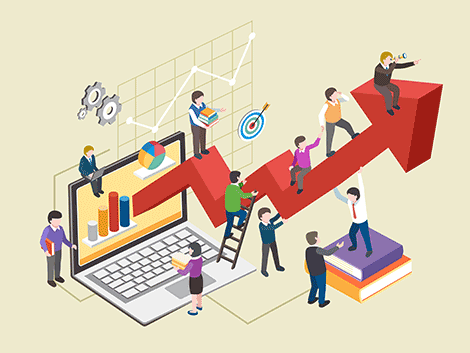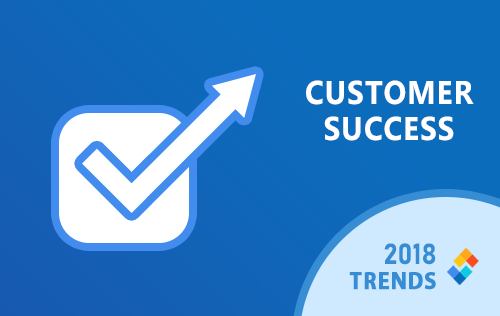Blog Jul. 03, 2018
Customer Analytics: Understanding User Perspectives

Today’s customers can be more complex than ever as they have more options now with the help of technology, and are not-at-all afraid to switch brands if not satisfied. With this, companies’ main priority now is to dissect big data analytics to be able to understand the consumers in a deeper level as they are the ones who will drive businesses to a greater return on investment (ROI).
What is “Big Data”?
Big data is a term for an extremely large volume and complex data sets which, if well-analyzed, can reveal rich insights on consumer behavior and product use.
A huge part in maintaining a business is to nurture and keep up with your customers. This means knowing what’s going on with your customers, which will also help your business align strategies to meet their expectations. However, understanding customers nowadays may be hard as hearing everyone out manually would be impossible, with a large number of users spread out across areas. Good thing businesses, customer care innovators, along with technology advances and artificial intelligence, have developed ways to know the customers better and easier; ways which could help you recognize trends, patterns and behaviors, through collating a huge amount of data from customer’s real transactions or journey, across all points of customer contact. But how do we start analyzing this data? It is first important to learn the following three user perspectives.
Customer Analytics: Understand 3 different perspectives in knowing your customers better
There are 3 distinct types of customer analytics which will help you extract more on what’s happening to your customers and each serves a unique purpose which contributes to the overall improvement of your business.
Descriptive Analytics: “Learn from the past”
Answers the question “What happened?”
This is the most basic or standard type of customer analytics and about 90% of organizations use it, according to DeZyre. This analysis describes and summarizes the past or what has occurred, as well as how it affects your business. Descriptive Analytics are historical insights such as CSAT, customer feedback whether structured or through Sentiment Analysis (see for explanation below) or understanding how users end up in a website or page through Google Analytics tool and more.
Some companies also use this analysis in attempting what the customers will do or want next. For instance, most businesses today implement “Recommendations” or “Suggestions” engine to their users. Facebook for one, recommends who to add as a friend, what page to like and more. While Netflix gives you a category of “Based on what you watched” rather than just the typical categories like comedy, romantic, or fantasy. In order to improve that system, businesses must use customer data, historic sales or what the users have done in the past, using their product or service.
Although it may not be the most recent method, Descriptive Analytics are useful for learning from past insights and also understanding the situation to influence the future of your business.
Predictive Analytics: “See the future”
Answers the question “What could happen?”
This analytics, along with machine learning technology, help predict a more accurate future for your business. We say predicting, as there’s no such thing as 100% guarantee when it comes to forecasting. Simply put, Predictive Analytics is to make use of the available data in your hand to be able to predict the data that doesn’t exist yet.
Companies use this analysis to gain a competitive advantage on understanding customer’s behavior, purchasing patterns and identifying trends through optimizing marketing campaigns, improving operations, reducing risk or churn and detecting fraud.
Predictive Analytics are actually used by many industries, this includes but not limited to:
Governments and the Public Sector
- Since they are leading a nation, governments should be the advanced ones in both convenience and security. This means improving services and leadership inside the country by keeping up with the trends and technologies, understanding their people and most especially, detecting and preventing fraud.
Banking and Financial Services
- All banks need a high security because huge amounts of money go in and out of people’s bank accounts. For customers to be able to continue a safer transaction, banks need to be ahead of the possibilities of fraud activities.
Retail
- This industry also needs to predict what consumers are likely to buy by determining which products to stock and what promos or offers are effective.
Oil, Gas and Utilities
- The energy industry also has welcomed Predictive Analytics for improving equipment and predicting future needs of resources to increasing safety and reducing risks for the people.
Unlike Descriptive Analytics which lets you understand customer behaviors or business performance from the past data, Predictive Analytics use all possible data and technology to make a prediction about where your customers, business or specific aspects of your business are likely headed to.
Aside from the fact that this analysis can help define what to do for your next strategies, it can also help your business either avoid a power punch or expect something to happen, which is a huge advantage for your company if used effectively.
Prescriptive Analytics: “Take actions”
Answers the question “What should we do?”
Prescriptive Analytics is a more advanced analysis, which combines the use of data, mathematical models (natural language processing, machine learning, statistics, operations research, etc.) and business rules. However, its practice is so new and has only been around 2003, that’s why there are still a lot of errors even though only 10% of companies around-the-world use it, according to Gartner. It goes beyond both Descriptive and Predictive Analytics. A combination of learning what happened in the past, what could take place in the future and taking one step further to help businesses perform the right actions, as well as understand how it will lead to its best possible outcome, in order to take advantage of the predictions.
This analysis goes through the process of laying down ‘what-ifs’ and analyzing business results under each recommended actions. For example:
- There’s a heavy rain or storm in your area and you decided to close your store but customers happen to need your certain product or service more than ever, far in-demand than the rest of your week. You may have decided to close it by thinking it’s the best option for your business but you just missed a great opportunity of increasing your revenue. This means not only looking at the crystal ball for predictions but act upon it based on the best possible decision. Prescriptive Analytics is ultimately used to accurately meet the end’s expectations thus reducing risky business decisions or failure.
Although the applications of Prescriptive Analytics today may lean towards industry rather than consumers. One best example of companies who applied Prescriptive Analytics is Google’s self-driving car. This driverless vehicle take in all these different data like LIDAR (Light Detection and Ranging), video data, audio data, GPS, and other more that the sensor needs to detect or analyze for the car to react accordingly on which turns it must rightfully take to prevent accident.
This analysis may be barely used as it is more complicated in nature, still, it can definitely bring a significant impact for growth if it is well-executed in a business.
What is Sentiment Analysis?
Also known as “Opinion Mining”, this analysis answers the question “What do people think or feel?” about something. It analyzes customers’ emotional tone through a series of words, determining whether it’s positive, negative or neutral. Sentiment Analysis can be used flexibly with Descriptive, Predictive and Prescriptive Analytics.
For example: “Wow! Thanks for answering my question so slow!” Despite the use of positive words like “Wow” or “Thanks”, the customer’s feeling is still leaning towards the negative thought “Slow”, which is the keyword to take back as feedback.
Customer analytics helps businesses in an effective decision-making process.

It can be huge stress understanding what customers really want as it varies, but the concept or process of customer analytics make it easier for a business to adjust as much as possible to the customer needs. Customer analytics can be accumulated through all points of customer contact, digital support, social media engagement and customer service centers. For companies, collecting such data is important, but understanding analytics and turning data into meaningful insights is another challenging but crucial task to handle; which is why some businesses choose to outsource this task to professionals.
Customer analytics does not only bring a competitive edge in terms of retaining your customers. This data could also have an impact on reducing operation costs, increasing revenue and product or service improvements, through the information it provides.
Businesses analysing their customers’ insights best are no doubt to attain greater success.
Understand not only your customers as a whole, but understand more how each person interprets your product or service. It may be an advantage already to simply have a large amount of data in your hand, but what matters most are the business actions taken after analysis. How you utilize data will be the determinant of your success.








